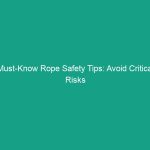Introduction
In today’s fast-paced work environments, ensuring health, safety, and environmental (HSE) compliance is more crucial than ever. Every workplace, regardless of its industry, has inherent risks that can lead to serious injuries or even fatalities. This is where Workplace Safety Assessments come into play. These assessments are systematic evaluations of the workplace to identify Hazards, assess risks, and implement Control Measures to mitigate those risks. Understanding the importance of these assessments is vital for both employers and employees, as neglecting them can lead to dire consequences.
The significance of Workplace Safety cannot be overstated. Not only does it protect employees, but it also shields organizations from potential legal repercussions and enhances overall productivity. In this article, we will delve into the core components of Workplace Safety assessments, explore regulatory frameworks, highlight Best Practices, examine case studies, discuss challenges, and look at future trends in Workplace Safety. By the end of this article, you will have a comprehensive understanding of how to effectively conduct Workplace Safety assessments and avoid critical risks.
Understanding Regulatory Frameworks
Regulatory frameworks play a pivotal role in shaping Workplace Safety protocols and ensuring compliance. Governments around the world have established various Regulations and Standards that organizations must follow to protect their workers. These regulations often dictate the methodologies for conducting Workplace Safety Assessments, ensuring a standardized approach to risk management.
Key Regulations and Standards
Some of the most recognized regulatory frameworks include:
- Occupational Safety and Health Administration (OSHA): In the United States, osha sets and enforces standards to ensure safe working conditions. Employers are required to conduct safety assessments and maintain records of workplace incidents.
- Health and Safety Executive (HSE): In the UK, the HSE provides guidelines for risk assessments and emphasizes the importance of proactive Safety Measures.
- ISO 45001: This international standard specifies requirements for an Occupational Health and safety management system, helping organizations improve employee safety and reduce workplace risks.
Compliance and Its Importance
Compliance with these regulations is not merely a legal obligation; it is an ethical responsibility that organizations owe to their employees. Non-compliance can lead to severe penalties, including fines and legal action, but more importantly, it can result in injuries and loss of life. Thus, conducting thorough Workplace Safety Assessments is essential for compliance and the overall well-being of employees.
Best Practices for Conducting Workplace Safety Assessments
To effectively conduct Workplace Safety Assessments, organizations should adopt several Best Practices that not only streamline the process but also enhance its effectiveness. Here are some of the most recommended practices:
1. Involve Employees
Engaging employees in the assessment process is crucial. They are often the first to identify Hazards and can provide invaluable insights into the risks associated with their jobs. Conducting safety meetings and encouraging open communication can foster a culture of safety within the organization.
2. Regular Assessments
Workplace safety is not a one-time effort but an ongoing process. Regular assessments should be scheduled to ensure that new hazards are identified, and existing controls are effective. Factors such as changes in operations, equipment, or workforce should trigger a re-evaluation of Safety Measures.
3. Utilize Checklists and Tools
Using standardized checklists and assessment tools can help streamline the evaluation process. These tools can guide assessors through various categories of hazards and ensure that no aspect of safety is overlooked. Additionally, technology such as risk assessment software can facilitate the documentation and tracking of safety assessments.
4. Prioritize Risks
Not all risks are created equal, and prioritizing them is essential for effective risk management. Organizations should categorize risks based on their severity and likelihood of occurrence. This approach allows for the allocation of resources to address the most pressing issues first.
5. Implement Control Measures
After identifying risks, it is imperative to implement control measures to mitigate them. This can include engineering controls, administrative controls, and Personal Protective Equipment (PPE). Regularly reviewing the effectiveness of these controls is also vital to ensure continuous improvement in workplace safety.
Real-World Case Studies
Understanding the practical implications of Workplace Safety Assessments can be greatly enhanced by examining real-world case studies. These examples can provide insights into effective practices and the consequences of neglecting safety.
Case Study 1: Manufacturing Plant Incident
In a manufacturing plant, a lack of proper safety assessments led to a severe accident involving machinery. The absence of guarding devices resulted in an employee suffering a serious injury. Post-incident investigations revealed that the company had not conducted a comprehensive safety assessment in over two years. Following this incident, the organization implemented a robust safety assessment program, significantly reducing workplace injuries.
Case Study 2: Construction Site Success
Conversely, a construction company that regularly conducted Workplace Safety Assessments was able to maintain a flawless safety record over five years. By involving workers in the assessment process and prioritizing high-risk tasks, the company created a culture of safety that emphasized proactive risk management. Their success illustrates the positive impact of thorough safety evaluations.
Challenges in Workplace Safety Assessments
While the importance of Workplace Safety Assessments is clear, organizations often face several challenges that can hinder their effectiveness. Recognizing these challenges is the first step towards overcoming them.
Lack of Resources
Many organizations, especially small businesses, may lack the necessary resources—both financial and human—to conduct thorough safety assessments. This limitation can lead to incomplete evaluations and unaddressed hazards. Seeking external consultants or Training programs can help bridge this gap.
Resistance to Change
Implementing safety measures often requires changes in established practices, which can be met with resistance from employees. To overcome this, effective communication about the Benefits of safety assessments and involving employees in the decision-making process can facilitate smoother transitions.
Data Management
Collecting and managing data from safety assessments can be daunting. Organizations need a systematic approach to store and analyze data to identify trends and areas for improvement. Utilizing digital tools can streamline data management and enhance reporting accuracy.
Future Trends in Workplace Safety Assessments
The landscape of workplace safety is continuously evolving, driven by technological advancements and changing workforce dynamics. Here are some key trends shaping the future of Workplace Safety Assessments:
1. Increased Use of Technology
Emerging technologies such as artificial intelligence, machine learning, and augmented reality are beginning to play a significant role in safety assessments. These technologies can analyze vast amounts of data to predict potential hazards and suggest preventive measures, enhancing the overall assessment process.
2. Focus on Mental Health
In recent years, there has been a growing recognition of the importance of mental health in the workplace. Future safety assessments will likely include evaluations of psychological risks and stress factors, promoting a more holistic approach to employee well-being.
3. Remote and Hybrid Work Considerations
As remote and hybrid work models become more prevalent, workplace safety assessments will need to adapt accordingly. This includes evaluating home office setups, ergonomics, and employee mental health, ensuring that safety measures extend beyond traditional office environments.
Conclusion
In conclusion, Workplace Safety Assessments are a critical component of any organization’s health and safety strategy. By understanding regulatory frameworks, adopting best practices, learning from real-world case studies, addressing challenges, and staying abreast of future trends, organizations can significantly enhance their safety protocols. It is essential to view safety assessments not just as compliance requirements, but as integral to fostering a safe and productive work Environment.
As we move forward, organizations must prioritize workplace safety and commit to ongoing assessments to protect their most valuable asset—their employees. Take action today by reviewing your current safety assessment practices and ensuring they meet the necessary standards and expectations. Together, we can create safer workplaces for everyone.


